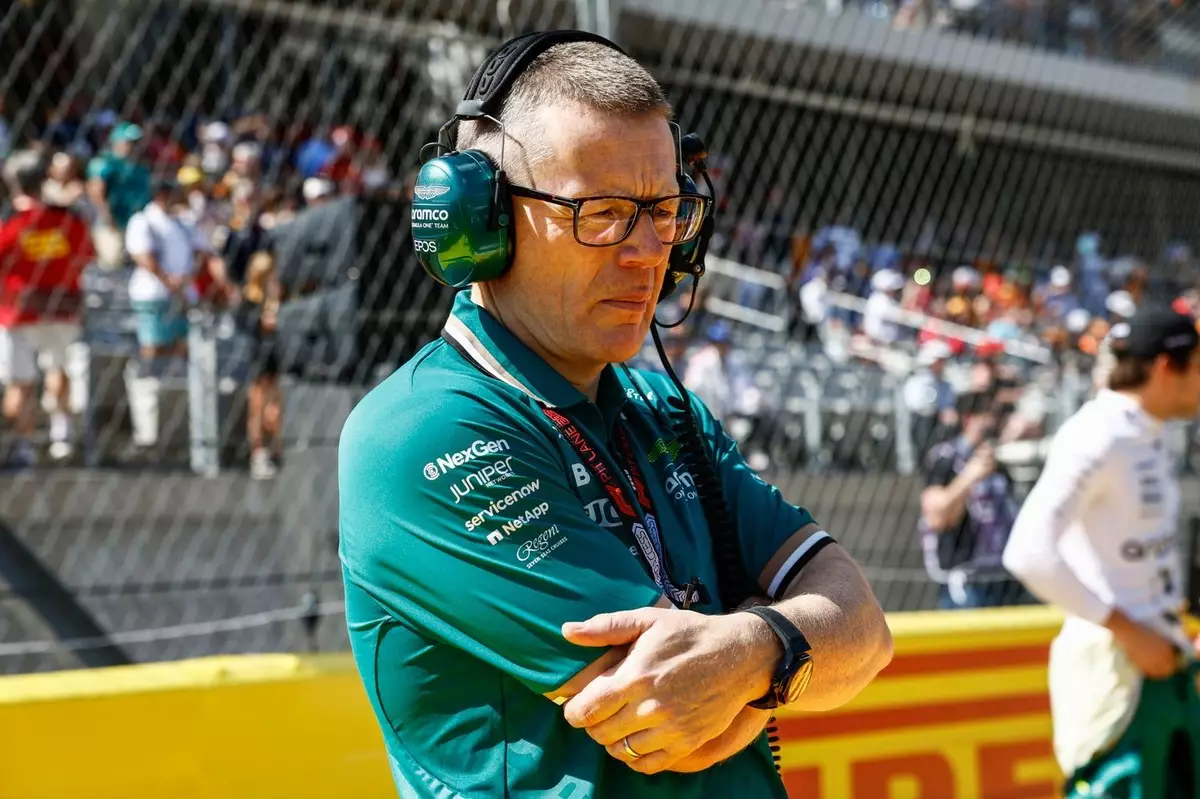In a bold and transformative move, Aston Martin has revamped its management team, marking a significant shift in its Formula 1 operations. The appointment of Andy Cowell as team principal represents not just a change in leadership but also a strategic pivot aimed at enhancing the team’s competitive edge. Cowell, who previously headed the High Performance Powertrains division at Mercedes, takes the reins from Mike Krack, who now assumes the title of chief trackside officer after a tenure that lasted nearly three years. This shakeup indicates Aston Martin’s ambition to elevate its status within the sport and underscores a broader trend of restructuring in Formula 1 teams aspiring for greater success.
The altercations within Aston Martin’s management structure come amidst a flurry of activity at their newly constructed Silverstone campus. The reorganization is characterized by distinct reporting lines and a clearer focus on performance, a vital aspect in the high-stakes world of Formula 1. Cowell’s dual role as both group chief operating officer and now team principal signifies the need for unified leadership to propel the team forward. According to official statements, both the aerodynamics and engineering departments have been split into dedicated teams, each tasked with maximizing trackside performance while directly reporting to Cowell. This bifurcation is designed to streamline operations and foster an environment that is conducive to innovation and excellence.
The appointment of Enrico Cardile, previously with Ferrari, as chief technical officer is another critical element of this restructuring. Cardile, upon the completion of his gardening leave, will direct factory-based developments, focusing the AMR Technology Campus team exclusively on the design and architecture of new race cars. This refocusing is crucial, especially considering the intense competition in Formula 1 where the margins for victory are razor-thin. By dedicating resources and personnel to specific areas, Aston Martin aims to enhance its overall performance and possibly break into the upper echelon of Formula 1 contenders.
While the reshaping of the management team appears promising, the transition is not without challenges. The background and authority of figures like Adrian Newey, who remains as managing technical partner, add complexity to the new hierarchy. Newey’s track record is unparalleled, yet his preference for a fluid approach rather than a traditional office structure could create ambiguity within a team striving for clarity and consistency. Moreover, the future of Tom McCullough, the performance director who has optimized car performance for over a decade, is now uncertain. His realignment raises questions about how his oversight will integrate with the newly defined boundaries of responsibility under Cowell’s leadership.
As McCullough transitions into a broader role likely overseeing multiple racing initiatives, it will be imperative for the team to establish clear communication channels. Without clear delineation of roles and responsibilities, the very restructuring meant to foster efficiency could inadvertently lead to confusion and inefficiency. The organization’s success will hinge on how well these new roles collaborate and how effectively they leverage the existing talent within the team.
Cowell’s assertion of being “incredibly impressed” with his team’s dedication seems both an acknowledgment of past efforts and a call to rise to new expectations. With the intent of transitioning into a full works team by 2026, and partnerships with industry giants like Honda and Aramco, Aston Martin has set a clear trajectory for itself. This bold vision is anchored in a commitment to innovation and a quest for competitive superiority—hallmarks of a truly championship-winning outfit.
As Aston Martin embarks on this ambitious journey in Formula 1, the spotlight will be on the execution of this restructuring and whether it can translate into improved performance on the track. The interplay of newly minted roles, alongside the existing framework, will ultimately determine if this restructuring yields the desired results or if it becomes another case of ambition outpacing reality in the ever-challenging world of motorsport. The coming months will be telling; how effectively the team integrates these changes will define its path forward in Formula 1.


Leave a Reply